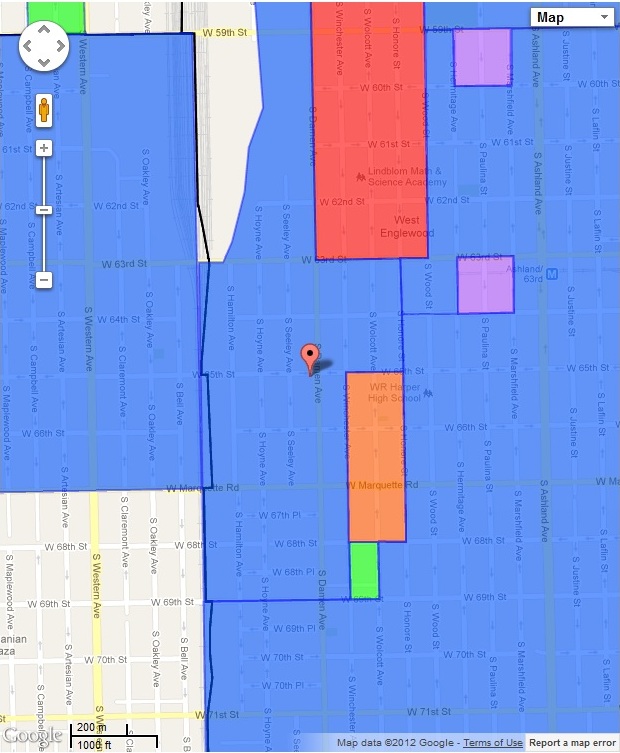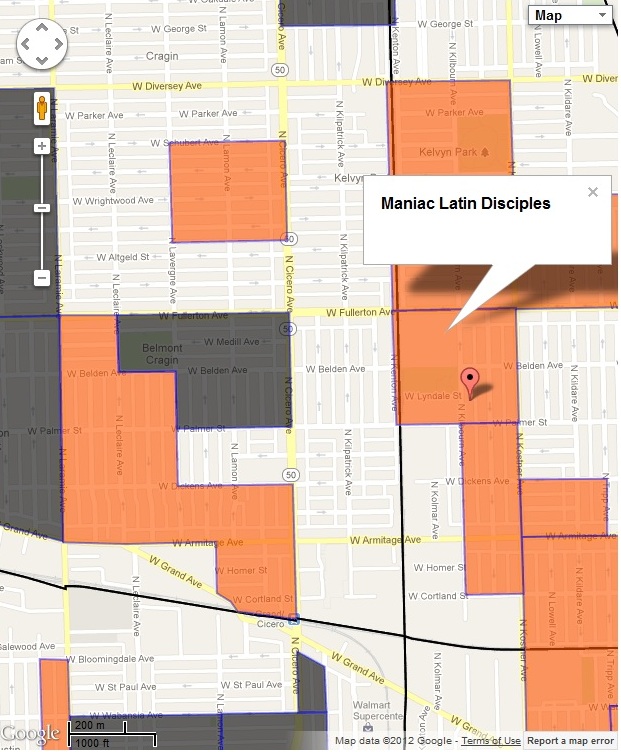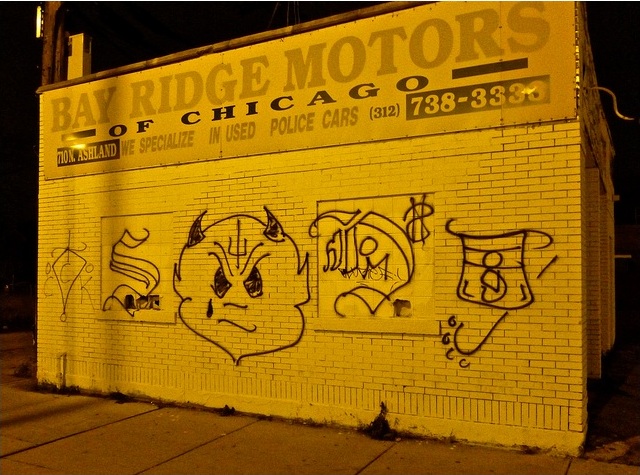Interactive Gang Map Paints A Picture Of Hypersegregated Chicago, Fractioning Gangs
By Chuck Sudo in News on Sep 25, 2012 2:00PM
WBEZ created an interactive map of where gangs operate across Chicago, using the most recent data and gang maps provided to them from the Chicago Police Department. While it doesn’t offer much in the way of surprises—anyone paying attention knows the South and West sides are flooded with gang activity—what we (and WBEZ) found interesting is why the Chicago Police Department doesn’t make these maps readily available and reminds us of Chicago’s status as a hypersegregated city.
CPD Chief of Organized Crime Nicholas Roti told WBEZ they don’t disseminate the maps because they fear it could unintentionally cause gang rifts and “stigmatize any particular Chicago neighborhood as being affiliated with gangs.” Well, you can’t stigmatize Englewood (map 1, below) or Lawndale or Austin any more than they already are. But take a look at a few other neighborhoods on the North and Northwest sides and you’ll see what Roti means.

We typed in the address of our former childhood home in Hermosa (map 2, below). Located just west of Logan Square, you can see growing pockets of Spanish Cobras territory, in orange.

Logan Square—with its thriving nightlife and housing market—shows an alarming trend of the splintering gang factions Police Superintendent Garry McCarthy cites as a main cause for the increase in the homicide rate this year. (Chicago has 59 gangs that have split into 625 factions, with those factions fighting each other.)

Diversey by Kimball is a large territory for the Maniac Latin Disciples. Milwaukee Avenue from Lyndale to Diversey is controlled by Orchestra Albany. Logan Square itself has Imperial Gangsters, Spanish Cobras, Ylo Disciples and Ylo Gangsters. New factions can pop up block by block.
The spike in homicides and gang violence in 2012 is the exception to what has been a 10-year decline in gang violence. While the national media has touted street gangs as the main reason for the uptick in homicides, Progress Illinois found the truth is a more nuanced.
But police department knowledge of gangs is imprecise. According to the Chicago Crime Commission, a nonprofit that publishes a yearly overview on street gangs, CPD identified metropolitan area gang population as anywhere between 68,000 and 150,000 members in November 2011, out of the 9.8 million residents in the metropolitan region.There is also a lack of clarity in saying that a shooting is gang related. It could mean a gang member shooting a non-gang member, shooting a rival gang member, or - increasingly - shooting a member of the same gang. Albert Lurigio, a psychology professor at Loyola University in Chicago who studies crime, says that the “changing nature of gangs” means more homicides stem from “minor conflicts like an insult or sign of disrespect” in small gangs with no clear hierarchy.
Progress Illinois’ Matthew Blake writes that Chicago street gangs were more organized between the 1970s and early 1990s: the era of the Almighty Black P Stone Rangers and other “nations.” CeaseFire Illinois’ Tio Hardiman told Blake “homicides were greater when you had more nations,” today’s street gangs have become less organized, and a “gang” can be declared over something as trivial as a lovers spat, which has led to the increase in the murder rate.
More factions with more irrational beefs equals more murders.
